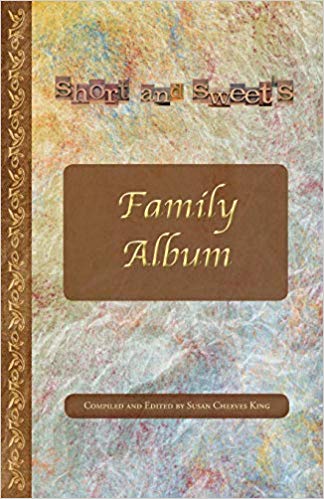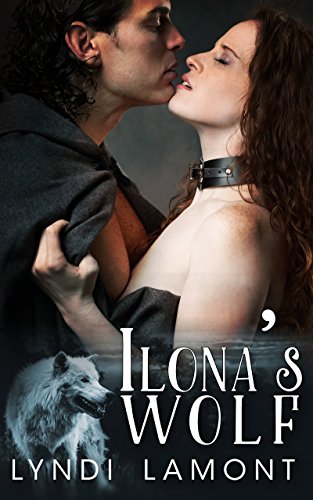Scandal
March 3, 2023 by Janet Elizabeth Lynn and Will Zeilinger in category Book Research, Partners in Crime by Janet Elizabeth Lynn & Will Zeilinger tagged as Hollywood, Scandals, Twilight Zone, Vic Morrow
Safety Working Conditions in the Hollywood Film industry
The civil and criminal actions lawsuit that came after the accident, during the filming of Twilight Zone, was the result of negligence. It was scandalous as the film’s director, John Landis, was charged and tried for manslaughter, along with other members of the film crew. They were eventually acquitted in terms of criminal liability, but civil penalties were assessed. Landis continued his career with little negative impact, but he found several of his long-term friendships with other filmmakers ended as a result of his “condescending attitude” towards the accident.
Millions of dollars were awarded to the families of the victims, mostly paid by insurance companies. Landis deflected the blame for the accident, claiming that the cause of the accident had been in part a special effects fireball detonated by error.
The television series The Twilight Zone was a popular weekly program from 1959 to 1964, the brainchild of writer and director Rod Serling. Its popularity resulted in a demand for reruns for years, and eventually was adapted as a full-length motion picture.
During the filming of the motion picture verson, an accident involving a helicopter killed actor Vic Morrow and two child actors, with multiple injuries to the helicopter crew and film personnel onboard. Morrow and one of the children were decapitated by the helicopter’s rotor; the other child was crushed. The accident brought to light unsafe working safety, particularly for children on film sets, and years of litigation which kept the story on the front pages for a decade.



On July 23, 1982, Morrow, 53, and two child actors, seven-year-old Myca Dinh Le and six-year-old Renee Shin-Yi Chen, were filming on location in California, in an area that was known as Indian Dunes, near Santa Clarita. They were performing in a scene for the Vietnam sequence, in which their characters attempt to escape from a deserted Vietnamese village from a pursuing U.S. army helicopter. The helicopter was hovering at approximately 24 feet above them when the heat from special effect pyrotechnic explosions delaminated the rotor blades (the blade material fractures into layers) causing the helicopter to plummet and crash on top of them, killing all three instantly.
Special-effects explosions on the set caused the pilot of the low-flying craft to lose control and crash into the three victims. The accident took place on the film’s last scheduled day of shooting.
Co-director John Landis and four other men working on the film, including the special-effects coordinator and the helicopter pilot, were charged with involuntary manslaughter. It was the first time a film director faced criminal charges for events that occurred while making a movie. During the trial, the defense maintained the crash was an accident that could not have been predicted while the prosecution claimed Landis and his crew had been reckless and violated laws regarding child actors, including regulations about their working conditions and hours. The trial lasted ten-months with the jury acquitted all five defendants in 1987. The families of the three victims filed lawsuits against Landis, Warner Brothers, and Twilight Zone co-director and producer Steven Spielberg who settled for undisclosed amounts. Twilight Zone: The Movie was released in the summer of 1983. The film received mixed reviews.
Click here for the news report of the accident.
Janet and Will’s Skylar Drake Mystery Series
BOOK RESEARCH—PEOPLE WATCHING by Will Zeilinger
February 3, 2023 by Janet Elizabeth Lynn and Will Zeilinger in category Book Research, Partners in Crime by Janet Elizabeth Lynn & Will Zeilinger tagged as Book Research, People watching, writers, writers life
Researching for a book takes many forms. When it comes to finding unique characters, I love to people-watch. That activity allows me to discover interesting physical characteristics and mannerisms I can use to flesh out some of the people (and animals) who make up the cast of characters. For most of my working career, I was a visual artist, which included being a graphic designer, photographer, illustrator, and cartoonist. Most of my projects involved sketching out how an ad or layout would appear. I always carried something to sketch out interesting people or places I encountered.
People-watching is especially helpful when writing a contemporary piece. Fashions (especially among teens) change quite often. Different age groups have certain “uniforms” but it’s best to avoid clichés. In the summer, for instance, older male baby boomers are fond of Hawaiian shirts or silk-screened T-shirts, cargo shorts, Ray-Ban sunglasses, and sandals. While women of the same age can be found wearing crop pants, tank tops or French-cut tees, and thin-strap sandals. Both genders are often found with a “fanny pack” strapped around their waist or slung over their shoulder. This doesn’t apply to everyone in that age group. More artistic women may gravitate to a caftan or flowing broomstick skirt and maybe a load of clunky costume jewelry.



Besides clothing, the way a person wears their hair can give clues about the character you are building in your mind. Do the men look like they get haircuts every week, once a month, or is it shaggy like they rarely ever get it cut at all? Do they get it cut as if they are still in active military service? Hairstyles can tell you if your character is one who is trying to recapture their youth, or if they go to the same salon/barber that their grandparents did.
Watching people can expose you to a multitude of variations. Don’t forget to look at their posture and stance. That can say a lot about the character’s attitude or general mood.
I live near the beach, and although it is not summer at the time of this writing, teens can still be found with a skateboard in hand, earbuds, and, of course, the ubiquitous cell phone.
If your story takes place in the Midwest or in New England, the whole scenario changes.
Some great places to watch people being people are checkout lines at big box stores, sporting events, airports, doctor/dentist waiting rooms, parks, libraries, post offices and other public places. Parents and grandparents are very interesting to watch when they are picking up kids/grandkids from school.



Wherever you choose to observe potential characters, remember to be courteous and subtle. Especially if you are researching children or young people. Don’t make it obvious you are taking notes. Of course, many writers rely on those they know to provide these character clues, but since we all belong to different socio-economic groups, using only those around us can skew your character descriptions.
Be open-minded and have fun looking for characters in the people you watch. It’s a great lunchtime activity—just, don’t stare. We’d all like to see these people in your book.
The Skylar Drake Series Co-authored by Will and His Wife Janet Elizabeth Lynn
Affiliate Links
A Slice of Orange is an affiliate with some of the booksellers listed on this website, including Barnes & Nobel, Books A Million, iBooks, Kobo, and Smashwords. This means A Slice of Orange may earn a small advertising fee from sales made through the links used on this website. There are reminders of these affiliate links on the pages for individual books.
Search A Slice of Orange
Find a Column
Archives
Featured Books
SHORT and SWEET’S FAMILY ALBUM
Join these 60 authors as they share their families’ stories of grace, forgiveness, loyalty, respect, support, vulnerability, love, laughter, and faith.
More info →NUMB
Will greed prevail, landing the Vitality Gem in the hands of an unpure soul or will Johnny Tanzer stand in his way with the wrath of the Gods?
More info →ILONA’S WOLF
Imagine a world filled with magic, a tormented knight, a damsel in distress, an evil sorcerer...
More info →Newsletter
Contributing Authors
Search A Slice of Orange
Find a Column
Archives
Authors in the Bookstore
- A. E. Decker
- A. J. Scudiere
- A.J. Sidransky
- Abby Collette
- Alanna Lucus
- Albert Marrin
- Alice Duncan
- Alina K. Field
- Alison Green Myers
- Andi Lawrencovna
- Andrew C Raiford
- Angela Pryce
- Aviva Vaughn
- Barbara Ankrum
- Bethlehem Writers Group, LLC
- Carol L. Wright
- Celeste Barclay
- Christina Alexandra
- Christopher D. Ochs
- Claire Davon
- Claire Naden
- Courtnee Turner Hoyle
- Courtney Annicchiarico
- D. Lieber
- Daniel V. Meier Jr.
- Debra Dixon
- Debra H. Goldstein
- Debra Holland
- Dee Ann Palmer
- Denise M. Colby
- Diane Benefiel
- Diane Sismour
- Dianna Sinovic
- DT Krippene
- E.B. Dawson
- Emilie Dallaire
- Emily Brightwell
- Emily PW Murphy
- Fae Rowen
- Faith L. Justice
- Frances Amati
- Geralyn Corcillo
- Glynnis Campbell
- Greg Jolley
- H. O. Charles
- Jaclyn Roché
- Jacqueline Diamond
- Janet Lynn and Will Zeilinger
- Jaya Mehta
- Jeff Baird
- Jenna Barwin
- Jenne Kern
- Jennifer D. Bokal
- Jennifer Lyon
- Jerome W. McFadden
- Jill Piscitello
- Jina Bacarr
- Jo A. Hiestand
- Jodi Bogert
- Jolina Petersheim
- Jonathan Maberry
- Joy Allyson
- Judy Duarte
- Justin Murphy
- Justine Davis
- Kat Martin
- Kidd Wadsworth
- Kitty Bucholtz
- Kristy Tate
- Larry Deibert
- Larry Hamilton
- Laura Drake
- Laurie Stevens
- Leslie Knowles
- Li-Ying Lundquist
- Linda Carroll-Bradd
- Linda Lappin
- Linda McLaughlin
- Linda O. Johnston
- Lisa Preston
- Lolo Paige
- Loran Holt
- Lynette M. Burrows
- Lyssa Kay Adams
- Madeline Ash
- Margarita Engle
- Marguerite Quantaine
- Marianne H. Donley
- Mary Castillo
- Maureen Klovers
- Megan Haskell
- Melanie Waterbury
- Melisa Rivero
- Melissa Chambers
- Melodie Winawer
- Meriam Wilhelm
- Mikel J. Wilson
- Mindy Neff
- Monica McCabe
- Nancy Brashear
- Neetu Malik
- Nikki Prince
- Once Upon Anthologies
- Paula Gail Benson
- Penny Reid
- Peter Barbour
- Priscilla Oliveras
- R. H. Kohno
- Rachel Hailey
- Ralph Hieb
- Ramcy Diek
- Ransom Stephens
- Rebecca Forster
- Renae Wrich
- Roxy Matthews
- Ryder Hunte Clancy
- Sally Paradysz
- Sheila Colón-Bagley
- Simone de Muñoz
- Sophie Barnes
- Susan Kaye Quinn
- Susan Lynn Meyer
- Susan Squires
- T. D. Fox
- Tara C. Allred
- Tara Lain
- Tari Lynn Jewett
- Terri Osburn
- Tracy Reed
- Vera Jane Cook
- Vicki Crum
- Writing Something Romantic
Affiliate Links
A Slice of Orange is an affiliate with some of the booksellers listed on this website, including Barnes & Nobel, Books A Million, iBooks, Kobo, and Smashwords. This means A Slice of Orange may earn a small advertising fee from sales made through the links used on this website. There are reminders of these affiliate links on the pages for individual books.
























































